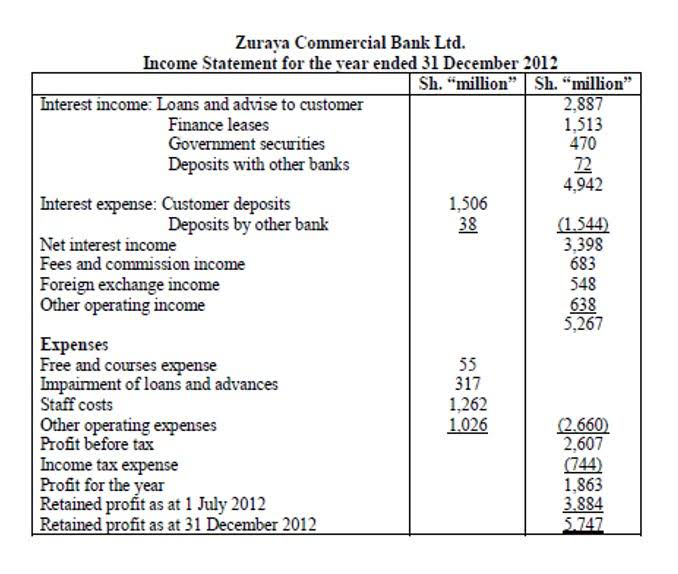
Clear the balance of the revenue account by debiting revenue and crediting income summary. The income summary is a temporary account used to make closing entries. Income and expenses are closed to a temporary clearing account, usually Income Summary. Afterwards, withdrawal or dividend accounts are also closed to the capital account. This is closed by doing the opposite – debit the capital account (decreasing the capital balance) and credit Income Summary.

Closing Entry in Accounting: Definition, Example, and Best Practices
In other words, they represent the long-standing finances of your business. That’s exactly what we will be answering in this guide – along with the basics of properly creating closing entries for your small business accounting. The Final Step of Closing Entries is closing the Dividends account.

Step 1 of 3
- We see from the adjusted trial balance that our revenue account has a credit balance.
- Let’s investigate an example of how closing journal entries impact a trial balance.
- We do not need to show accounts with zero balances on the trial balances.
- This reflects your net income for the month, and increases your capital account by $250.
- Start by debiting each revenue account for its total balance, effectively reducing the balance to zero.
- As stated before, Income Summary is a temporary account and would also be closed.
Notice that revenues, expenses, dividends, and income summaryall have zero balances. The post-closing T-accounts will be transferred to thepost-closing trial balance, which is step 9 in the accountingcycle. Closing entries are performed after adjusting entries in the accounting cycle. Adjusting entries ensures that revenues and expenses are appropriately recognized in the correct accounting period.
What Are Permanent Accounts?
The income Summary account is a temporary account where you would transfer the balance from the Revenue and Expense account. All of Paul’s revenue or income accounts are debited and credited to the income summary account. This resets the income accounts to zero and prepares them for the next year. Temporary accounts can either be closed directly to the retained earnings account or to an intermediate account called the income summary account. The income summary account is then closed to the retained earnings account. An accounting period is any duration of time that’s covered by financial statements.
- The goal is to make theposted balance of the retained earnings account match what wereported on the statement of retained earnings and start the nextperiod with a zero balance for all temporary accounts.
- It’s important to note that neither the drawing nor the dividends accounts need to be transferred to the income summary account.
- Closing entries are a fundamental part of accounting, essential for resetting temporary accounts and ensuring accurate financial records for the next period.
- It involves shifting data from temporary accounts on the income statement to permanent accounts on the balance sheet.
- The Income Summary account has a credit balance of $10,240(the revenue sum).
- If your business is a sole proprietorship or a partnership, your next step will be to close your income summary account.
- Remember, dividends are a contra stockholders’ equity account.It is contra to retained earnings.
For the past 52 years, Harold Averkamp (CPA, MBA) hasworked as an accounting supervisor, manager, consultant, university instructor, and innovator in teaching accounting online. He is the sole author of all the materials on AccountingCoach.com. For the past 52 years, Harold Averkamp (CPA, MBA) has worked as an accounting supervisor, manager, consultant, university instructor, and innovator in teaching accounting online. We follow strict ethical journalism practices, which includes presenting unbiased information and citing reliable, attributed resources.
- It is a holding account for revenues and expenses before they are transferred to the retained earnings account.
- Now Paul must close the income summary account to retained earnings in the next step of the closing entries.
- One of the types of journal entries that is executed at the end of the accounting period to transfer balances to permanent accounts from temporary accounts.
- All of Paul’s revenue or income accounts are debited and credited to the income summary account.
Notice that the balances in the expense accounts are now zeroand are ready to accumulate expenses in the next period. The IncomeSummary account has a new credit balance of $4,665, which is thedifference between revenues and expenses (Figure5.5). The balance in Income Summary is the same figure as whatis reported on Printing Plus’s Income Statement. To further clarify this concept, balances are closed to assureall revenues and expenses are recorded in the proper period andthen start over the following period. Both closing and opening entries record transactions, but there is a slight variation in their purpose. After this closing entry has been posted, each of these revenue accounts has a zero balance, whereas the Income Summary has a credit balance of $7,400.
- The trial balance is like a snapshot of your business’s financial health at a specific moment.
- For the past 52 years, Harold Averkamp (CPA, MBA) has worked as an accounting supervisor, manager, consultant, university instructor, and innovator in teaching accounting online.
- Closing all temporary accounts to the retained earnings account is faster than using the income summary account method because it saves a step.
- We follow strict ethical journalism practices, which includes presenting unbiased information and citing reliable, attributed resources.
- Then, credit the income summary account with the total revenue amount from all revenue accounts.
The second entry requires expense accounts close to the IncomeSummary account. You might be asking yourself, “is the Income Summary accounteven necessary? ” Could we just close out revenues and expensesdirectly into retained earnings and not have this extra temporaryaccount?

Analyzing the opening trial balance:



